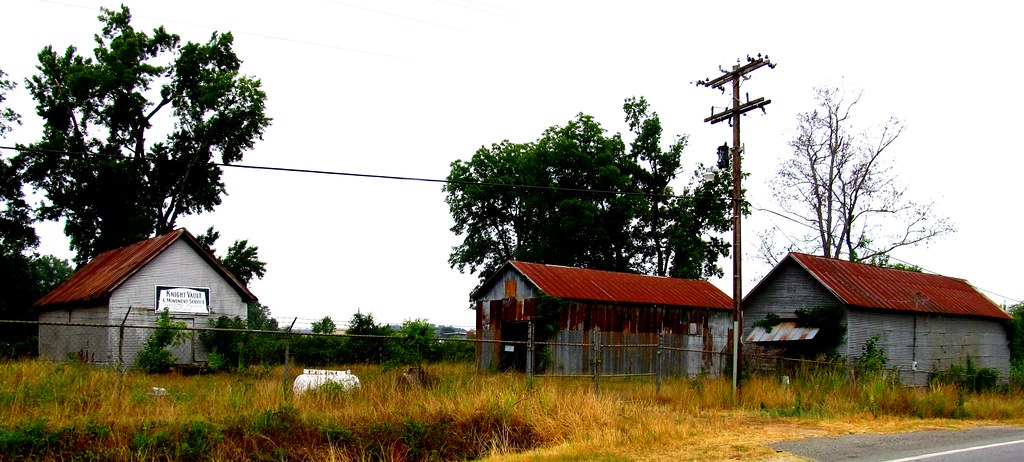Texas claimed its independence from Mexico in 1836 as a result of the Texas Revolution. It became a sovereign nation. Even so, Mexico considered Texas part of its rightful territory. Texas faced many difficulties during its early years as a new country as it struggled to keep going and it pushed to join the United States. So in 1845 it traded its sovereignty to become the 28th state. This also created tensions between Mexico and the United States, leading to warfare in 1846. The United States won decisively and grew considerably at Mexico’s expense. Its spoils included all of California, Arizona, Utah and Nevada, plus parts of several other states.
Elsewhere in the United States, settlers pushed out from the original Atlantic states onto the prairie. These included Mexican War veterans. They returned home, platted towns, and used names familiar to them. Some of those names reflected their military victories. Of course that brought an odd smattering of Mexican themes to places far from the border.
Montezuma

Montezuma ruled the Aztecs from his capital of Tenochtitlan when Spanish conquistador Hernán Cortés arrived in 1519. Cortés famously captured Montezuma and destroyed the empire. The Aztecs — at their prime when Cortés arrived — fell as famine, disease and warfare ravaged its lands.
Then Tenochtitlan evolved into a Spanish colonial capital, Mexico City. High upon a hill within that city rose Castillo de Chapultepec (map), a home of Spanish and then Mexican rulers. These were the famous Halls of Montezuma referenced in the official hymn of the United States Marine Corps. Marines stormed and captured Castillo de Chapultepec, a key to seizing Mexico City during the war.
I couldn’t find a single place called Montezuma in Mexico. However military veterans picked up the name and moved it to spots in Georgia (map), Iowa, Indiana, Ohio, Kansas, Tennessee, Virginia, California and New York. The largest, Montezuma County in Colorado, actually did not come from the war. People once thought mistakenly that the Aztecs built nearby Mesa Verde. Thus, they named the county accordingly and called its primary town Cortez.
Matamoros

Matamoros, directly on the southern side of the Rio Grande River, became a staging point for an American invasion. The army of the United States under General Zachary Taylor built a fort along the river. Mexican forces responded by bombarded the fort. Then the Americans called for reinforcements, and a large cavalry and artillery battle broke out (map). The U.S. army routed its foes with better, quicker-firing artillery. Maj. Jacob Brown died during the battle so Taylor changed the name from Fort Texas to Fort Brown. Later a town grew around the fort and it also adopted the name, becoming Brownsville, Texas.
Places inspired by the battle used a slightly different spelling in the United States, namely Matamoras. I stayed overnight in Matamoras, Pennsylvania on my way to New England recently (map). I wondered why a Pennsylvania town adopted the name of a Mexican city, and that inspired my search for more. Matamoras held other secrets including the easternmost point in Pennsylvania and a corner of the New Jersey – New York – Pennsylvania (NJNYPA) tripoint. It was also remarkably close to the New Jersey highpoint.
Another Matamoros surfaced in Indiana.
Buena Vista

Buena Vista translated from Spanish as “good view.” However, combatants probably didn’t get an opportunity to appreciate the scenery. Mexican General Santa Anna hoped to crush the American army at the Angostura Pass (map). His army numbered three times that of his foe and he had them cornered. Then American artillery and well-trained infantry stopped the Mexican advance. Eventually the Mexicans withdrew. Neither side claimed victory although Mexico suffered greater casualties and failed to defeat its much smaller foe.
Buena Vista appeared again in the American heartland. It spread to places as far apart as Iowa, Michigan, Indiana, Pennsylvania (map), Wisconsin, Illinois, Tennessee, and Virginia. Many of those places emphasized an Americanized pronunciation, something closer to Beuwna Vista.
Hidalgo

A vision of the Virgin Mary appeared several times in 1531 to a peasant outside of Mexico City. The spot became a sacred shrine, Our Lady of Guadalupe. Much later, Miguel Hidalgo y Costilla led the Mexican War of Independence, ending Spanish rule in 1821. A town adjacent to the shrine combined the two names, becoming Guadalupe Hidalgo (map).
The United States defeated Mexico in 1848, destroying its army and capturing its capital. The two sides came together at this town and negotiated an agreement favorable to the United States. It became the Treaty of Guadalupe Hidalgo.
The largest Hildago in the United States appeared as a county name in New Mexico (map). Another county of Hidalgo was established in Texas. A much smaller Hildago also sprouted up in Illinois.

Leave a Reply